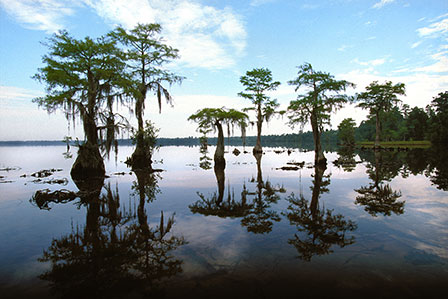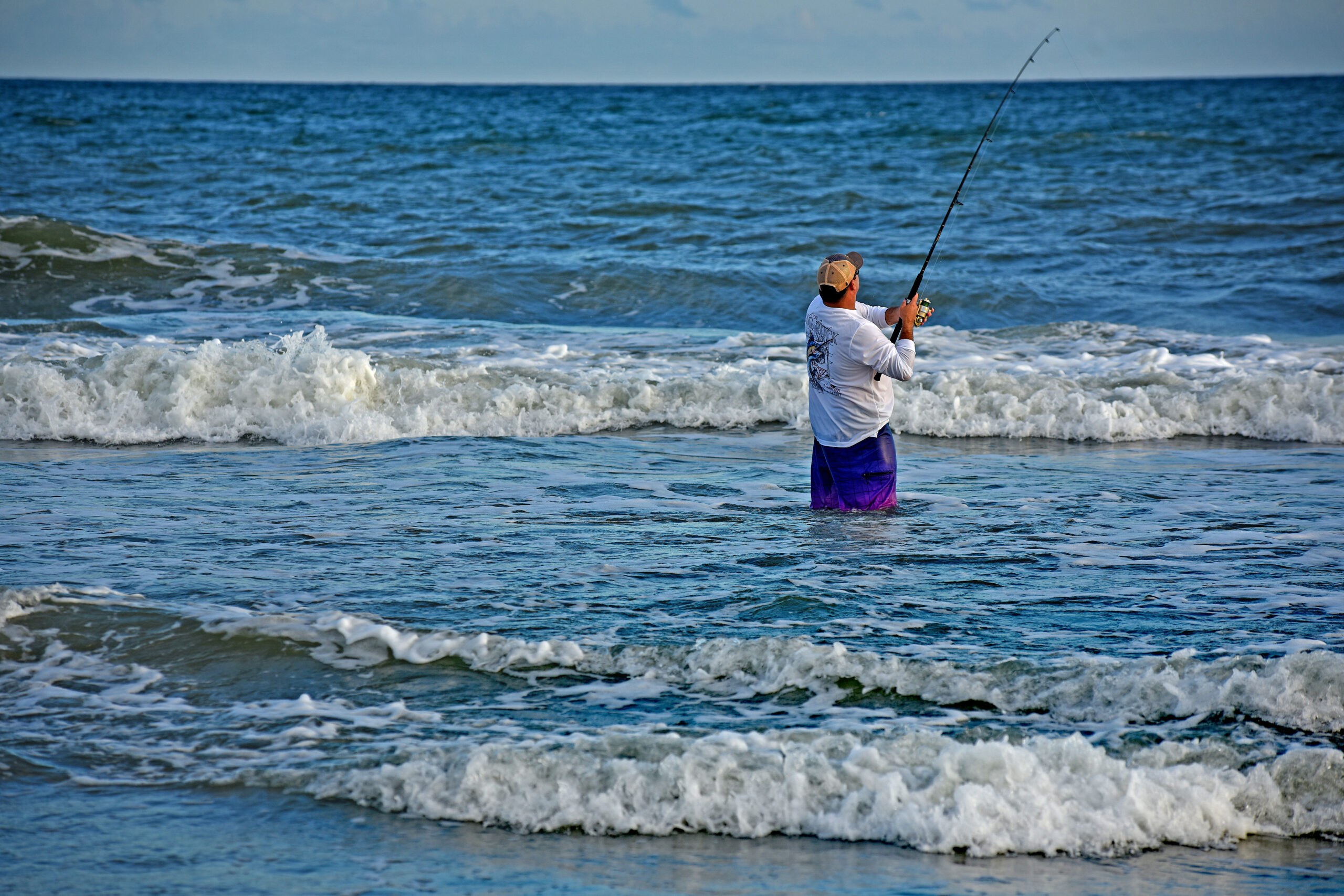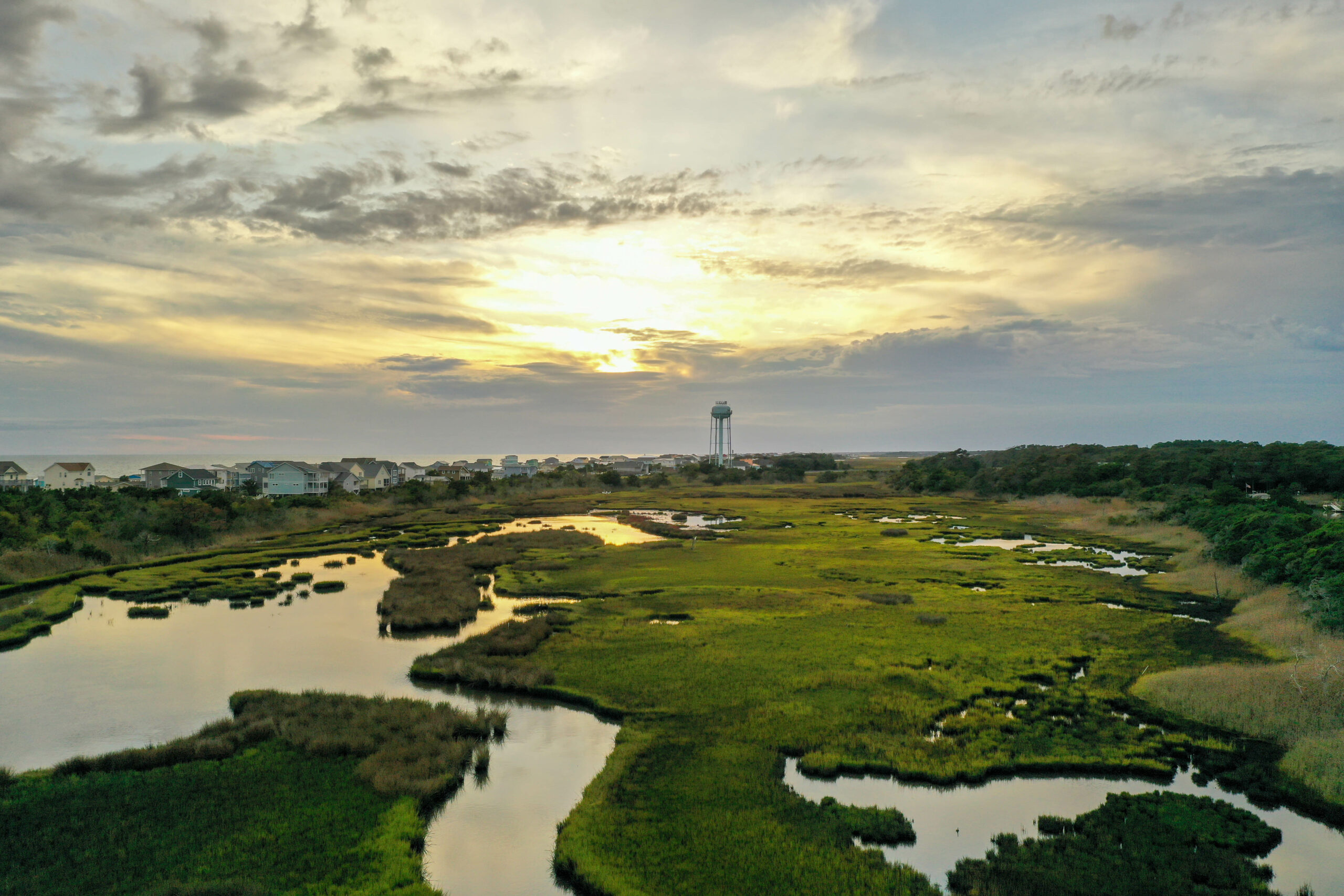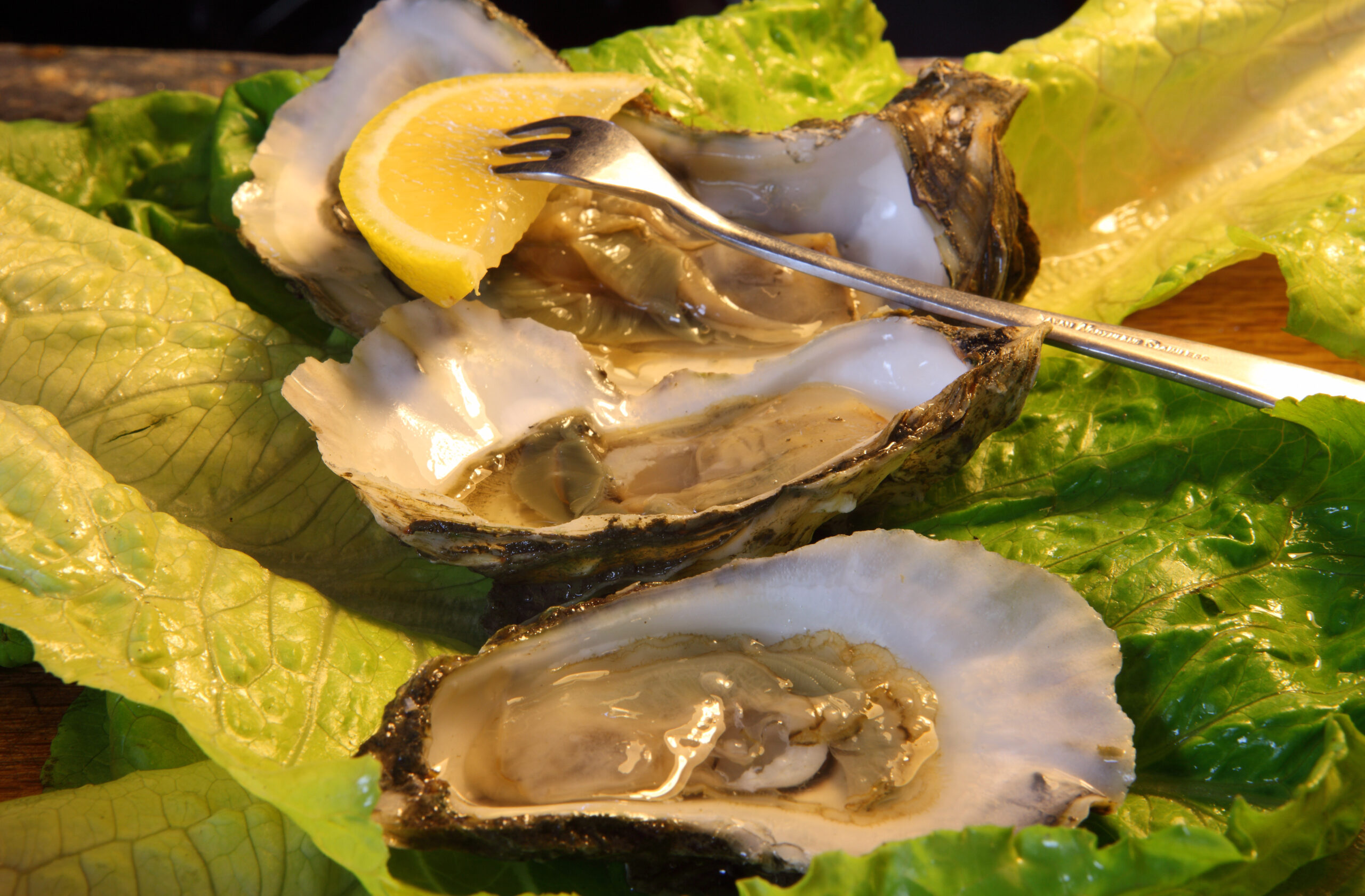NATURALIST’S NOTEBOOK: Secrets of the Shallows: Nuisance Moss Animal Invades North Carolina Coast

Last fall, something strange started appearing in the waters surrounding Ocracoke Island.
“It looked like a bunch of little clear tree branches,” Gene Ballance,a fisherman and Ocracoke native, says of the mysterious substance. “It seemed to have zero gravity — it didn’t want to sink or float — it just hung there in the water,” he describes. “It’s like trying to explain an alien or a UFO or something — an unidentified floating object.”
The people of Ocracoke, a small, remote island south of Hatteras, have a strong fishing heritage dating back to the early 18th century, when wooden ships sailed and pirates ruled the seas. There isn’t much that comes out of the water that surprises Ocracokers, but they had never seen anything like this before.
In September, clear, thin, slimy strands that looked like grass began to clog pound nets, a stationary fishing gear that traps flounder near the shore. At times the sheer weight of the invader caused sections of the nets to rip or topple over. Trying to manually remove strands only tore the nets more.
The mysterious organism wreaked havoc on the already short autumn flounder season, Ballance says. “Most of the flounder pound netters either held back setting out their nets or pulled them up entirely.”
BOOM AND BUST SPECIES
The strange, plant-like menace that caused so many headaches on Ocracoke is actually an animal, says Joseph Pawlik, a marine biology professor at the University of North Carolina at Wilmington.
More specifically, it is a bryozoan, or “moss animal” whose scientific name is Zoobotryon verticillatum. There is no official common name for the species, but it grows in colonies and is sometimes referred to as “animal grass” or a “sauerkraut bryozoan.” Pawlik identified the creature based on a photo sent to him by Terri Kirby Hathaway, marine education specialist for North Carolina Sea Grant.
Pawlik describes animal grass as “gelatinous, but not mucousy, sort of like those thin, crispy noodles you get in Japanese restaurants.”
“People are blown away when they find out it’s not an algae,” he says.
The bryozoan filter-feeds on phytoplankton and typically thrives in warm tropical waters, according to Pawlik. He and Hathaway theorize that its sudden appearance in North Carolina may be due to a combination of environmental and climatic factors, including drought, high salinities, extended higher water temperatures and low turbidity due to lack of storms. It was reported from Core Sound, near Beaufort in Carteret County, as far up as Oregon Inlet, in Dare County.
“It’s a boom-and-bust fouling species, well known to take over one year, then be absent for a long time,” Pawlik says, noting that It appears in Florida Bay and the Indian River Lagoon along Florida’s Atlantic coast.
The animal grows amazingly fast, Pawlik adds. “It doesn’t need light to grow — as long as it’s eating phytoplankton cells and the temperature is right it can keep growing.”
As filter feeders, sauerkraut bryozoans don’t have a complicated nervous system. They have thin body walls made mostly of water, he explains. “They can grow fast because there isn’t a lot of ‘meat’ to them.”
Sauerkraut bryozoans must begin growing on some kind of substrate, such as rocks, jetties or boat hulls. Because they grow so rapidly, they often break off in strong currents and drift along in large mats similar to sargassum.
Commercial fishermen reported pulling in animal grass as far as 10 to 15 miles offshore, according to Ballance. Pawlik says those reports may have been Amathia distans, a close relative of Zoobotryon verticillatum that is typically found offshore. “It’s hard to tell them apart,” he adds.
During October’s annual red drum tournament in Avon, surf fishermen pulled in piles of animal grass, according to Hathaway.
“We didn’t need fishing rods, we needed John DeereTM weed wackers,” concurs Frank Folb, owner of Frank and Fran’s tackle shop, which hosts the event. Although the tournament attracted 350 participants from 15 states and the United Kingdom, only 10 red drum made an appearance.
“HUGE” HARDSHIP
Animal grass is a rather cosmopolitan creature, according to Larisa Avens, a research biologist in Beaufort, some 60 miles south of Ocracoke.
“It’s suggested that it originated in the Pacific, and it is listed as an invasive species,” she says. Besides being well documented in Florida, it is reported to have clogged power plant intakes in Monterey Bay, Calif, and interfered with salt flat mining in Australia.
Avens works at the National Oceanic and Atmospheric Administration’s Beaufort Laboratory researching sea turtles. Part of her job involves working with pound net fishermen in nearby Core Sound, who often find wayward sea turtles in their nets. Turtles and fish typically don’t die in pound nets, which are wide and open at the top. The lab pays fishermen for their time so Avens can accompany them and study any sea turtles hanging out in the nets.
“Most sea turtle studies are conducted on the beach,” she explains. “This gives us a rare chance to study sea turtles in the water.”
Avens says she began contacting other researchers and questioning locals when Core Sound pound netters started reporting large quantities of a strange grass in their nets. She quickly deduced that the mystery “plant” was animal grass.
“The general consensus is that it has been around [Core Sound] before, but it has never been this bad,” she says. “This has been by far the worst year. It takes up the whole net so nothing can get in it, and it so heavy it sometimes knocks the nets down. It has been a huge hardship for fishermen.”
In 2006, the commercial southern flounder fishery brought in more than 2 million pounds at a value of nearly $5 million. The fishery occurs mostly during the late spring through the fall in sounds and rivers using gill nets and pound nets, according to Bob Hines, fisheries specialist for North Carolina Sea Grant. Pound netters depend heavily on southern flounder for the fall “run” of flounder, he explains.
But the N.C. Division of Marine Rsheries (DMF) usually closes the fishery by Dec. 1 each year because of concerns about overfishing. And, in 2007, the National Marine Rsheries Service shut down the flounder gill net fishermen in Hyde, Tyrell and Dare counties because of too many interactions with sea turtles, a federally protected species.
“Some estimates said that these fellows lost 25 percent of their livelihoods when the fishery was closed,” Hines says. “As one fishermen explained it to me: ‘Locally, you have just a few ‘hustles’ in which you can make money. Flounder fishing was one of those and closure took that away.'”
Ballance agrees, noting that he and other southern flounder fishermen felt squeezed by both government regulations and Mother Nature this year.
“We knew about the closures, but we were blindsided by the environment,” he says, referring to the destructive animal grass and warm water temperatures. Normally, autumn’s chillier water signals adult flounder to migrate out through the inlets into the ocean to spawn.
At the end of November, in light of poor landings in October, the DMF heeded pleas from fishermen and extended the southern flounder season by 14 days.
“Now that water temperatures have dropped and more flounder are available, we hope this move will help fishermen with their catch,” says David Taylor, fisheries manager for the DMF.
ADIOS ANIMAL GRASS
Fishermen weren’t the only ones befuddled by the nuisance bryozoan. Some beachcombers noticed it too, especially the stench, Hathaway says.
“Because it’s an animal, it really stinks when it dies — unlike a rotting dead plant smell, which isn’t too bad!” she explains.
Still, boater Rob White was more taken aback by the bryozoan’s abundance than its odor.
White, owner of Good Fortune Sailing Charters in Beaufort, says he started seeing large amounts of an unusual grass-like substance in the water near Cape Lookout in August.
Assuming it was an alga, the coastal ecology tour guide used a plant key and decided it must be slime grass.
But by the second week in September, White could no longer reach the barrier island because the plant-like material was so thick.
It fouled the anchor, forcing White to jump in the water.
“It was like swimming in noodle soup,” he says. “There was a lot more weed than water.”
White also claims to have seen large amounts of what he now believes was animal grass stacked up on the west beach of Cape Lookout, from the jetty on the north end to the power station spit.
“I’m a biologist out in the field for 40 years and I’ve never seen anything like it,” he says. By mid-November, water temperatures in Core and Pamlico Sounds and the ocean finally dropped, some much needed rain blessed the state, and the nuisance began to disappear.
“Once the water temperatures dipped below 70 degrees, it went away,” Folb observes.
“It’s amazing, it was everywhere and now it’s gone,” Ballance adds. “It’s like it self destructed or something.”
And Ballance — along with Folb, White and many others — hopes it never comes back.
This article was published in the Winter 2008 issue of Coastwatch.
For contact information and reprint requests, visit ncseagrant.ncsu.edu/coastwatch/contact/.
- Categories:


